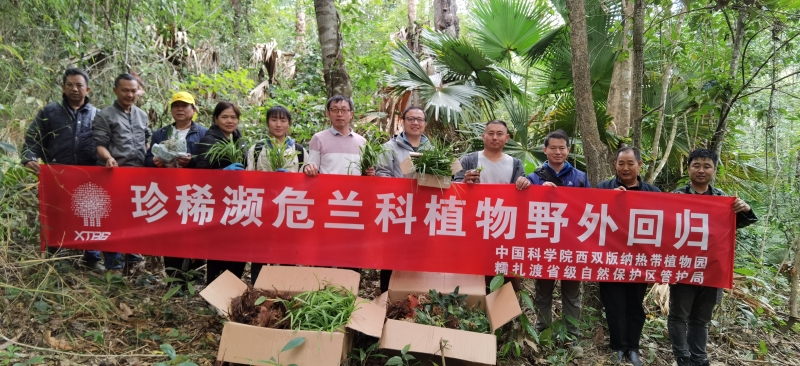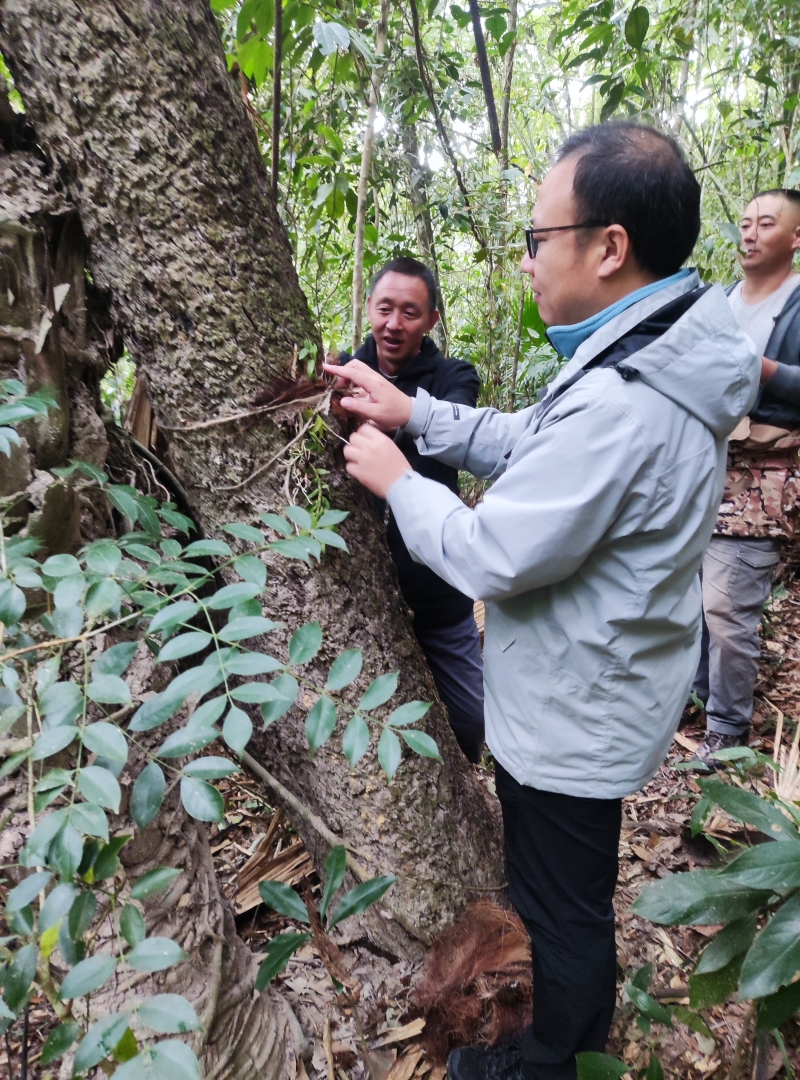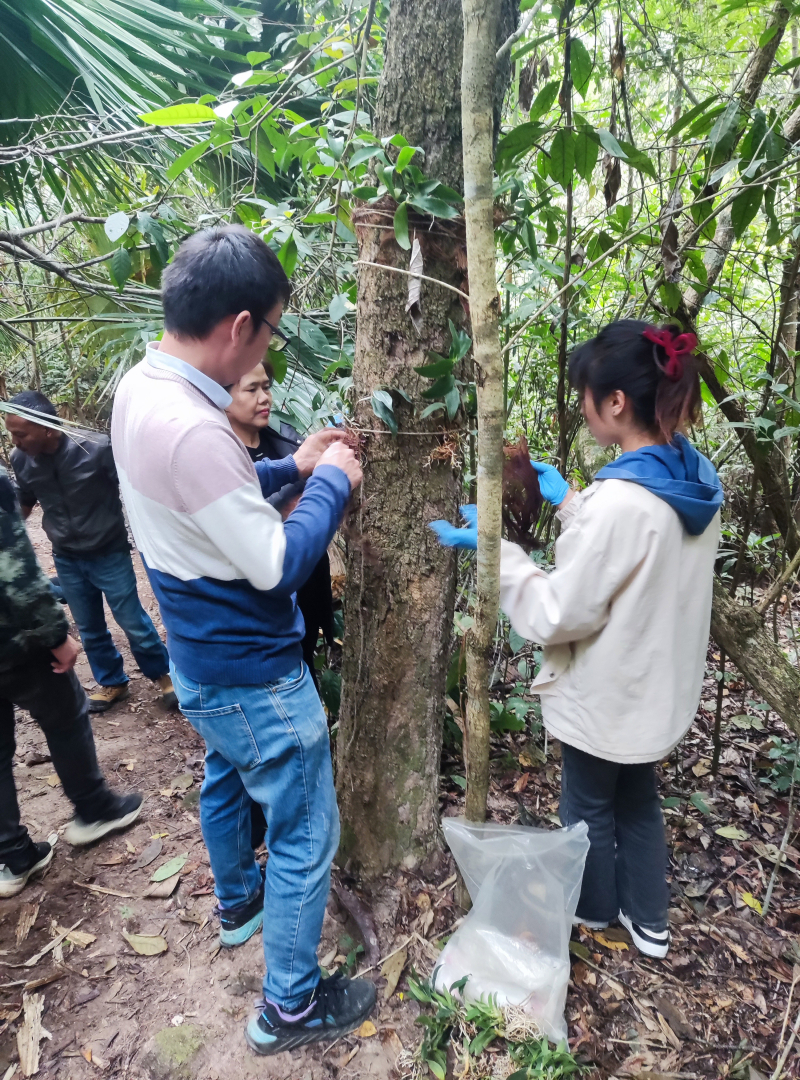Orchids are one of the largest families of flowering plants, and they are also one of the most threatened, in part due to their complex life history strategies. Threats include habitat destruction and climate change, but many orchids are also threatened by unsustainable (often illegal and/or undocumented) harvest for horticulture, food or medicine. In China, a total of 291 orchid species are currently protected, with 41 species listed as class I and 250 species as class II for special protection. Ex situ and in situ conservation, together with reintroduction, are the main methods for the conservation of threatened plant species. During academic exchange with Nuozhadu Provincial Nature Reserve Administration, researchers from Xishuangbanna Tropical Botanical Garden (XTBG) learned that there are many orchid species naturally distributed in this nature reserve. In addition, some parts of the nature reserve are similar to the habitats of Paphiopedilum spicerianum, a critically endangered and listed as a Wild Plant Species with Extremely Small Populations (PSESP) in China. To see if the region is suitable habitat for rare and endangered orchid species, XTBG researchers carried out reintroduction of 9 orchid species to the wild in Nuozhadu Nature Reserve in January 2024. The 9 orchid species are as following: 50clusters of Paphiopedilum spicerianum, 50 clusters of Paphiopedilum gratrixianum, 100 clusters of Dendrobium lituiflorum, 100 clusters of Dendrobium aphyllum, 100 clusters of Dendrobium chrysotoxum, 100 individuals of Rhynchostylis retusa, 100 clusters of Dendrobium densiflorum, 200 clusters of Cymbidium iridioides, 100 clusters of Cymbidium dayanum, totaling 900clusters (plants). 


|



